Earlier this week, I did a 2-mile walk-run on the treadmill for the first time since August 2023. This wasn’t even a “mostly run” walk-run. This was a very boring, “0.1 mile walk, 0.1 mile run; repeat ten times,” kind of two miles. But it didn’t matter.
I was so happy. Running my little 0.1 mile increments, I was practically laughing. Grinning like I was having the time of my life in the middle of the gym.
I knew this run was boring. Damn it was boring. But I was actually able to do it. I was actually running and not in pain. I had hope that I could one day be back on the trails pushing myself and genuinely having the time of my life.
Let’s start with this bright moment of joy. Because the rest of this story, well, it gets to some dark moments.
 (Photo: Johanna Flashman)
(Photo: Johanna Flashman)
Everyone gets injured at some point in their lives. Being injured and having to recover is about as universal as liking pizza.
And if you do any sort of outdoor recreation or sport, it’s more of a “how bad?” rather than an “if” situation.
That being said, people often aren’t quite as vocal about their experiences being injured as they are about liking pizza or even their favorite pizza toppings.
Well, my favorite pizza topping is pineapple and here’s my most recent injury experience.
The Injury Story
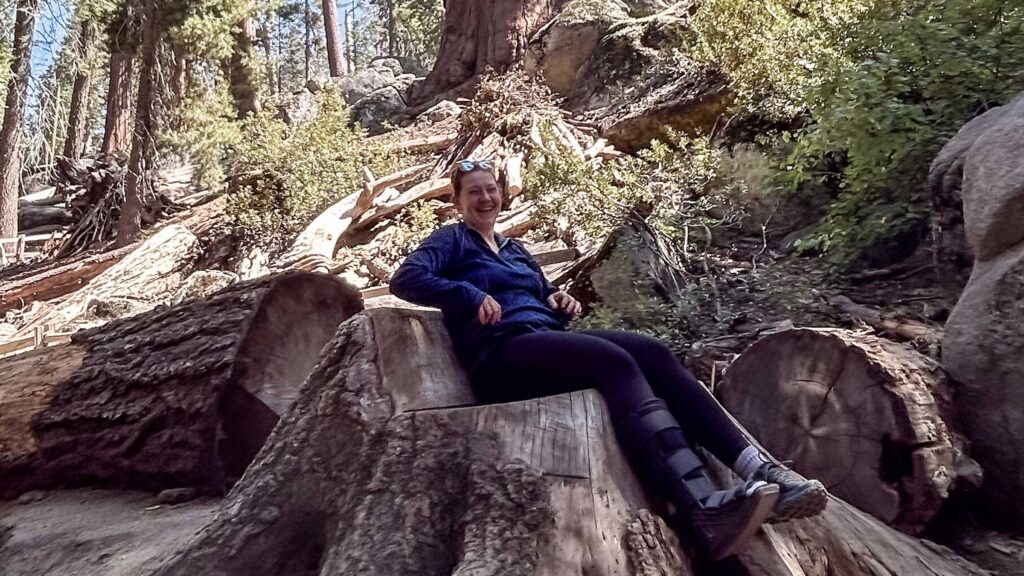 (Photo: Colin Lauzon)
(Photo: Colin Lauzon)
I’ve been dealing with an on-and-off injury since around July 2022 when I kicked a rock and jammed my big toe while trail running. It hurt a lot at first, but I managed the classic, “walk it off” and was able to ignore it most of the time. When I was finishing up my final hikes for my guidebook in July 2023, it got to a point where I couldn’t ignore it anymore. Post-hike or trail run, I’d get stabbing or aching pains in my big toe.
I know—it’s just a toe. You’d think something so little is just a minor injury. But injuries with feet can have a pretty dramatic impact, even if they’re relatively small.
When I finally saw a podiatrist, she poked around the ball of my foot as I winced with every prod. After seeing how much inflammation I had in my toe joint, she put me in a boot and said “see me in five weeks.” I HATED it. Hobbling around with this clunky boot that pinched my toes and made my ankles sore, I was in self-pity station. I spent five weeks annoyed with my limitations, grieving my outdoorsy life, pushing my mental health to the limit trying to finish my book (ironically about hiking), and only half following the treatment.
When I had my follow-up appointment, my toe had not made enough progress reducing the inflammation. I was told another five weeks of boot-time or a steroid injection and two weeks in a cast with no driving. I was in tears sitting on the exam room bed. The last five weeks had been torture and the idea of five more weeks of the same felt like a death sentence.
Obviously, it was not.
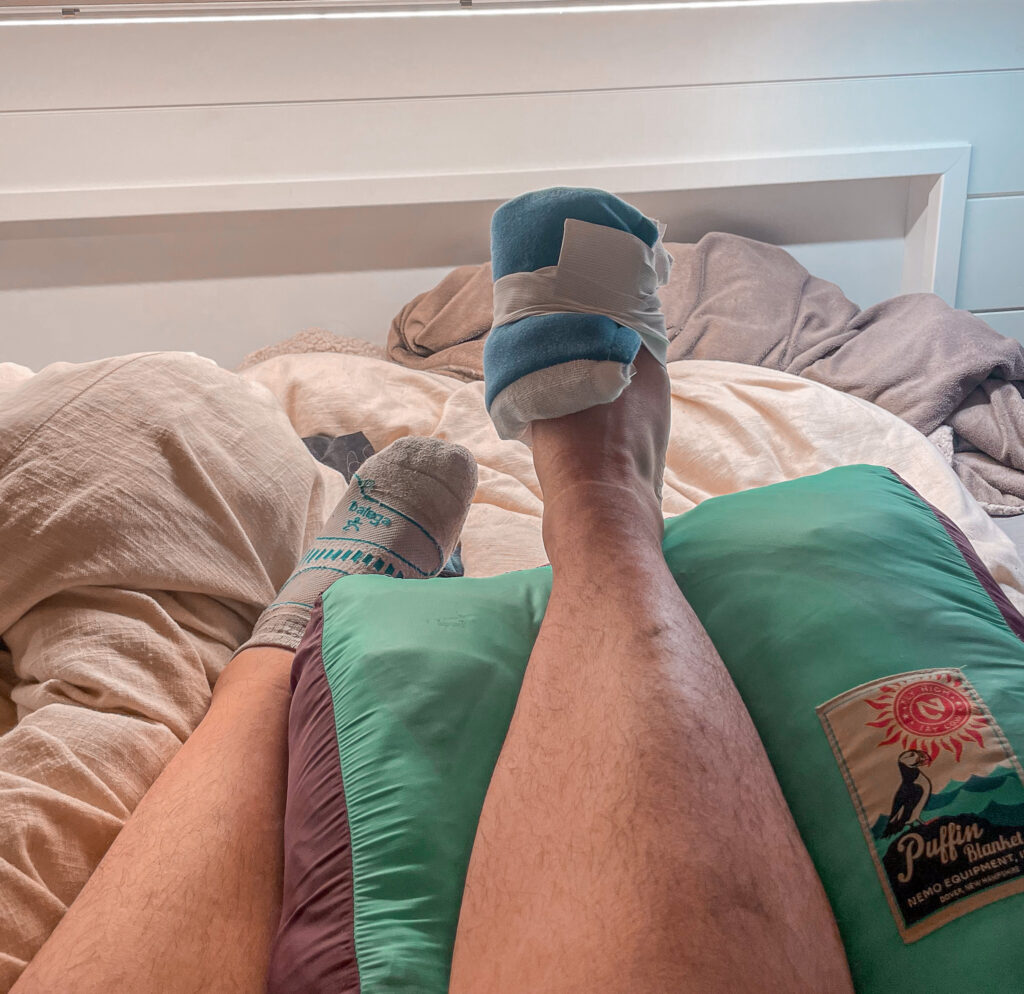 (Photo: Johanna Flashman)
(Photo: Johanna Flashman)
I had to take a step back and regroup to realize I was basically throwing a tantrum because I wasn’t getting my way. I wanted to be better, but that just wasn’t the reality. This was an “ah-ha” moment for me.
No matter how much I willed my body to be okay. It wasn’t and what I was doing wasn’t working. I needed a mindset shift.
I tried to lean into acceptance, but I also got a second opinion from a sports medicine doctor who immediately recommended physical therapy. I followed instructions, talked to friends who’d been injured, and did everything I could to take it easy without losing my mind. Then, I kept up daily icing, minimal activity, and used the boot when I needed to.
It’s been over seven months since that first podiatrist appointment. With the help of physical therapy and mindful movements, I’ve been able to return to many of my beloved outdoor sports and in the grand scheme of things, it hasn’t been that much time. But seven months away from activities that once felt like lifelines—that felt like an identity—it can feel like a lifetime.
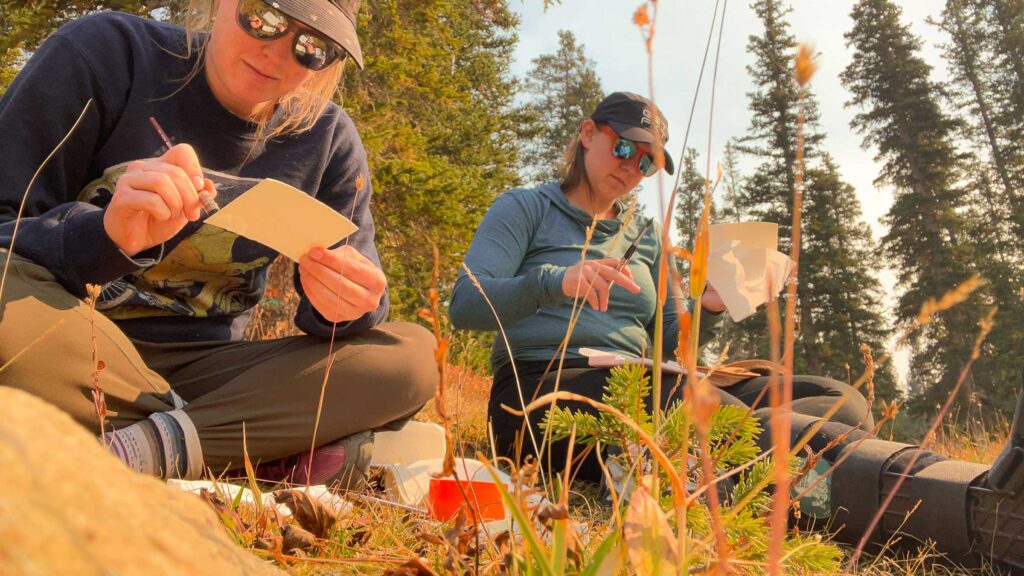 (Photo: Natalie Sheffield)
(Photo: Natalie Sheffield)
Running and hiking are activities that play instrumental roles in my self confidence, mental health, and physical health. However, they’re also key parts of my work. I’ve missed out on assignments because I couldn’t actively test gear. It’s a part of how I stay connected with my clients in the industry. And, my activities keep me inspired to write new stories.
At the same time, I’m learning that injuries can be an opportunity as well. I’m learning to shift and adapt—to find joy in other areas. I’m still in a grief stage where honestly, I’d much rather not be injured, but this is where I am, so I’m trying to make the most of it.
When I asked someone who’s further on in his injury journey if he wished he’d never gotten hurt, he thought for a minute and said, “If I had not gotten this injury, I would not be who I am today…and I like who I am today more than who I was before the injury.”
I think that’s all we can hope for, really. To become versions of ourselves who we like more than the version we were before.
The Lessons I’ve Learned Being Injured and Working in the Outdoor Industry
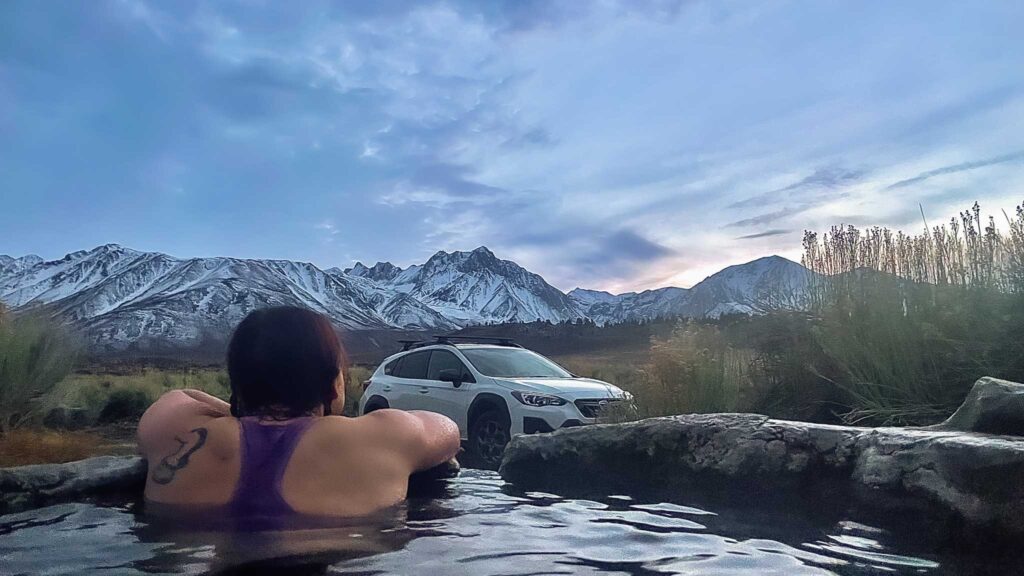 (Photo: Colin Lauzon)
(Photo: Colin Lauzon)
I hope the story brings glimpses of relatability and shared experience to folks who’ve been or currently are injured. Through all of this, I’ve also learned more concrete takeaways that may be helpful as well.
1. Join The Injured Athletes Club
The thing that helped me shift my mindset and get on board with getting better was listening to The Injured Athletes Club Podcast. Hearing so many other athletes’ stories about getting injured gave me perspective. It validated my feelings of frustration and hopelessness and it offered me an alternative path forward with seeing the injury as an opportunity.
I haven’t read the hosts Carrie Jackson and Cindy Kuzma’s book Rebound: Train Your Mind to Bounce Back Stronger from Sports Injuries yet, but I think it’ll be the next audiobook I listen to!
2. Injuries Can Connect You to People
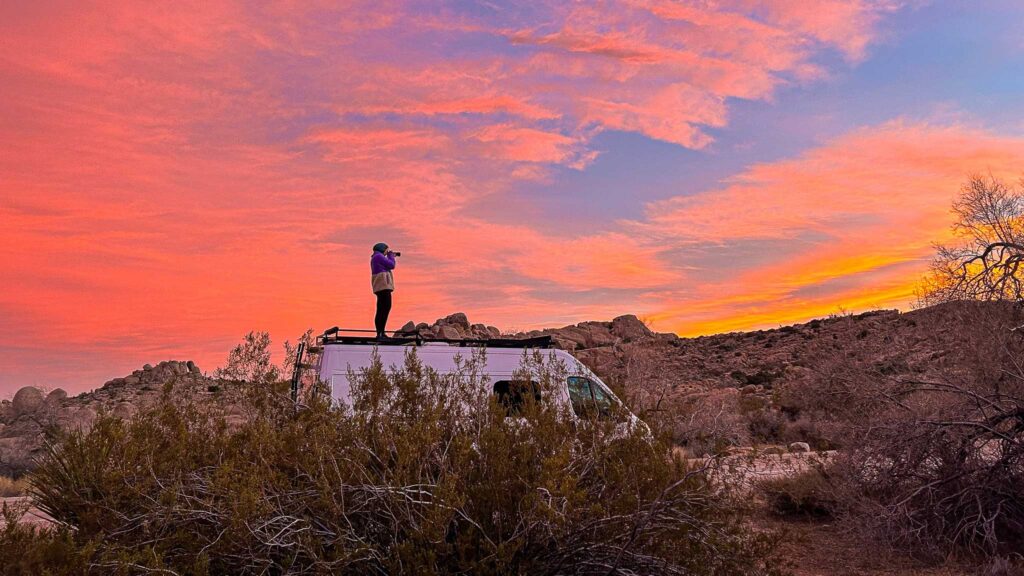 (Photo: Colin Lauzon)
(Photo: Colin Lauzon)
In searching for ways to deal with my injury, I’ve spoken to people on a different level. It’s made my connections deeper and I’ve gained a new perspective. I’ve talked to people and pursued stories that I might not have learned about had I not been injured.
Especially working in the outdoor industry, not being able to do the outdoor activities I’m trying to write about can feel like a big barrier to connection and successfully getting work. In reality, I think it brings me closer to finding the right clients and work—those who see injury and recovery as an essential perspective within the outdoors rather than a liability.
3. Be Patient With Your Body
I hate this one. Like, I hate it with a passion.
When the only thing you can do is just…wait for your body to heal? I hate it.
However, soft tissue just takes a long time to heal and there isn’t really a way around that. It just takes time and I’m having to learn to be more patient. It’s a work in progress though and some days are better than others.
4. There Will Be Setbacks
 (Photo: Johanna Flashman)
(Photo: Johanna Flashman)
Just before Thanksgiving, I was feeling significantly better. I’d been able to do some hikes, climb, and mostly exist with very minimal pain. So I tried a little run. Tiny. Just down the block.
It didn’t go well.
All the pain and swelling came back. It was extremely disheartening. I felt like I was back at square one and it was always going to be like this.
That being said, testing the boundaries a little will sometimes mean setbacks and taking a step back. That doesn’t mean I did anything wrong. I just have to keep being patient and accept that having to take a step back or two is part of the process.
5. You Can Strengthen Other Areas
Just because my toe is injured, doesn’t mean I can’t do arm workouts, core workouts, or swim. They aren’t the things I love to do, so they don’t have the same dopamine hit and it’s harder to keep at it, but it’s something. It’s a way for me to improve the rest of my body while my toe can heal. It’s helped a lot with my mindset shift and reminding myself that this time isn’t a waste.
6. Advocate for Yourself
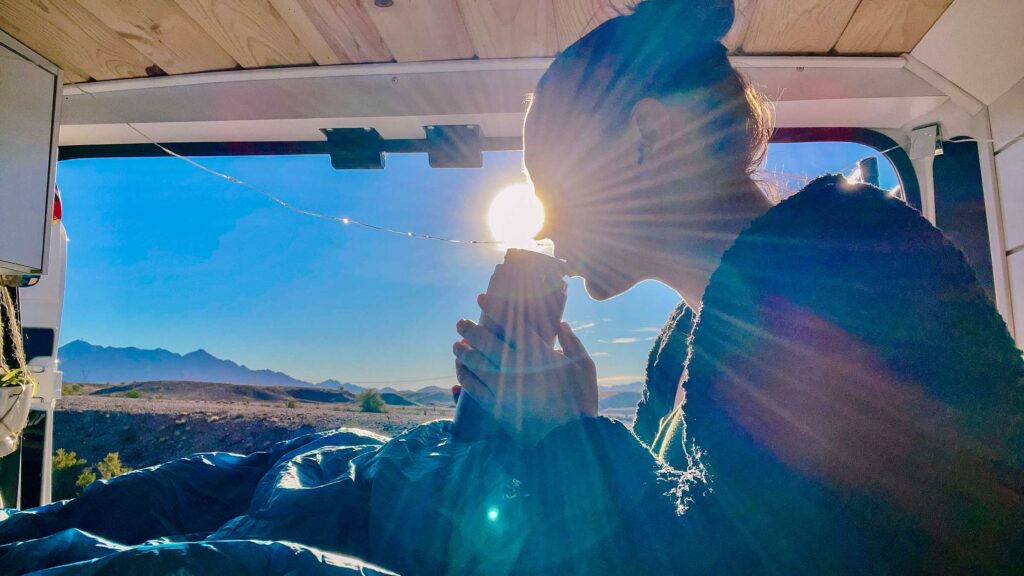 (Photo: Johanna Flashman)
(Photo: Johanna Flashman)
If I hadn’t asked to get a second opinion from a sports medicine doctor, I would have been in a boot for an extra three weeks, which would have caused more damage and weakness to my ankle and the rest of my leg.
While doctors are doing their best and are trained to help, only you know what hurts and what you’ll be able to do. You have to be the one to seek a second opinion, follow through with exercises, ask for that follow-up appointment, say what doesn’t feel good, and overall advocate for yourself. I’ve seen the outcome from both when I have done this and when I haven’t and I’ve gotten way better results from the times I have stuck up for myself.
Through my own experience and getting advice from other athletes, I’ve learned that you won’t get what you need unless you communicate and advocate for it.
7. Have Goals
I’ve often found myself stuck in a mindset thinking things like:
This is just my life now.
I’ll never be able to run again.
I’ll never get back to where I was pre-injury.
It’s hard to deal with those thoughts. One thing I’ve found that has helped me not get stuck in that is to build a clear vision of healing by creating goals. It’s also provided another tool for communicating with my support team (doctors, physical therapists, personal trainers, etc.). You can ask them what a realistic goal would look like and share your goals so they know what you’re working towards.
For example, my hopeful goal is to run a 50k trail race by the end of 2024. It’s a long journey considering I’m only just now getting back into running, but I think communicating this goal with my physical therapist has given him a better idea of how to help me and how much further I still want to take this.
The Slow Road to Recovery

All in all, it’s a slow recovery and I don’t always listen to the lessons I’ve learned. I don’t always see this process of recovery and discovery in a positive light. I don’t want to keep practicing my resilience. But this is where I am. I’m still in the outdoor industry, writing, listening, and experiencing as much as I can.
Like this:
Like Loading...